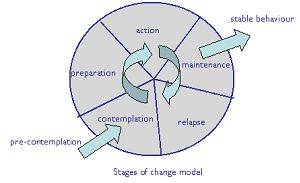Last night I attended a free session at our local mental health facility. It was called Getting the Low Down on Substance Use, and was presented by Michael Coughlin, a registered nurse with the Royal’s Substance Use and Concurrent Disorders program.
I was interested because I have a young friend who uses heroin. He was kicked out of the 28-day program last year for using drugs but he speaks highly of the program and its staff, and says he’ll be back someday. I consider this a very high endorsement.
Coughlin started out by saying that this session was about the addict, not about the people connected to the addict. If you are being affected by someone with an addiction it can be very frustrating, and you should get help for yourself.
Here are some of the things Coughlin said:
- The Royal subscribes to the Final Common Pathway Model, which holds that addiction to chemicals is an end-stage and that there is no single cause of addiction. Only a relatively small proportion of the population is vulnerable to addiction; others can use the same substances without becoming addicted. This vulnerability originates from biological, psychological and/or social factors, but results in a permanently re-wired brain. This permanently re-wired brain is the disease.
- Age is a critical factor in addiction. If you take drugs when you’re 14 or 15, while your brain is still developing, you are far more vulnerable to addiction.
- Addiction is a disease. This doesn’t absolve the addict from responsibility for his or her own behaviour. Similarly, diabetes is a disease often caused by lifestyle choices, yet the diabetic is still responsible for their behaviour.
- One of the hallmarks of addiction is frequently “a breathtaking lack of judgment.”
- Direct confrontation of addicts, especially when it’s coming from anger or frustration, is counter-productive, and often results in further entrenchment of the addiction.
- The term “concurrent disorders” means different things. In Ontario it means having an addiction in conjunction with a serious mental illness. Approximately 3 to 4%Â of the general population has concurrent disorders, and about half of people with an addiction have a mental illness. It is imperative that both disorders get treated together.
- 35% of intravenous drug users commit suicide.
 The Stages of Change model outlines the stages of recovery: contemplation, preparation, action, and maintenance. (Pre-contemplation is the stage before the person wants to quit.) At any one of these stages, the addict is vulnerable to relapse, which is a normal part of the process and should not be regarded as failure.
The Stages of Change model outlines the stages of recovery: contemplation, preparation, action, and maintenance. (Pre-contemplation is the stage before the person wants to quit.) At any one of these stages, the addict is vulnerable to relapse, which is a normal part of the process and should not be regarded as failure.
- The goal of the Royal’s program is to help the individual move through these stages to achieve abstinence and improved health, wellness and quality of life.
- The recovering addict needs a lot of support in the early stages of recovery to maintain structure, make self-care a priority, manage mental health issues, re-integrate into the community, and avoid relapse. (Apparently we only have a tenth of a second to respond to an impulse, and most of us aren’t very good at consistently making good choices, whether we’re addicts or not.)
Upon completing his presentation, Mr. Coughlin introduced two people who have successfully been through the program.
Gord is 58 years old and has been abstinent for 27 months. He struck me as a thoughtful and insightful man with a lot of history, a subtle sense of humour, and a touching mix of humility and pride.
He spoke about living with the stigma of addiction – he hadn’t really cared what other people thought of him, but he found his own self-loathing painful.
Toward the end of his active addiction, preparing to use alcohol or drugs was the highlight of his day. The feeling of anticipation was the highest he was going to get. (After awhile, drugs don’t deliver the euphoria they did in the beginning; addiction keeps you in constant pursuit of an increasingly elusive high.)
Gord got kicked out of the Royal’s program because he couldn’t stay sober. He kept relapsing and coming back until he succeeded.
He attributes his eventual success to “doing things I didn’t want to do.” He had to suspend belief in his own addicted thoughts and feelings, as they were killing him. A big part of staying sober involved learning how to take care of himself. Simple things, like eating and sleeping, which he had always resisted.
April has been sober for 21 months, and I mistook her for one of the counselors at first. She seems genuinely happy now but says she used to be emotionally and spiritually bankrupt. She drank and used drugs to cope with the bad things in life and to celebrate the good things. Alcohol was her only coping skill; learning new coping skills was critical to her success.
Then there was a quick question-and-answer session, and the event wrapped up.
All in all, it was an worthwhile way to spend an evening and I’ll keep my eyes open for other interesting events at the Royal.
















Very informative post…thanks
My mind keeps going back to the 35% who commit suicide.